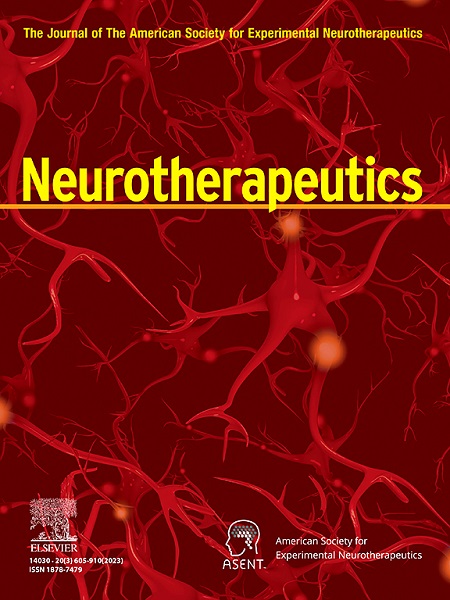Role of astrocytes connexins - pannexins in acute brain injury
IF 5.6
2区 医学
Q1 CLINICAL NEUROLOGY
引用次数: 0
Abstract
Acute brain injuries (ABIs) encompass a broad spectrum of primary injuries such as ischemia, hypoxia, trauma, and hemorrhage that converge into secondary injury where some mechanisms show common determinants. In this regard, astroglial connexin and pannexin channels have been shown to play an important role. These channels are transmembrane proteins sharing similar topology and form gateways between adjacent cells named gap junctions (GJs) and pores into unopposed membranes named hemichannels (HCs). In astrocytes, GJs and HCs enable intercellular communication and have active participation in normal brain physiological processes, such as calcium waves, synapsis modulation, regional blood flow regulation, and homeostatic control of the extracellular environment, among others. However, after acute brain injury, astrocytes can change their phenotype and modify the activity of both channels and hemichannels, which can result in the amplification of danger signals, increased mediators of inflammation, and neuronal death, contributing to the expansion of brain damage and neurological deterioration. This is known as secondary brain damage. In this review, we discussed the main biological mechanism of secondary brain damage with a particular focus on astroglial connexin and pannexin participation during acute brain injuries.
求助全文
约1分钟内获得全文
求助全文
来源期刊

Neurotherapeutics
医学-神经科学
CiteScore
11.00
自引率
3.50%
发文量
154
审稿时长
6-12 weeks
期刊介绍:
Neurotherapeutics® is the journal of the American Society for Experimental Neurotherapeutics (ASENT). Each issue provides critical reviews of an important topic relating to the treatment of neurological disorders written by international authorities.
The Journal also publishes original research articles in translational neuroscience including descriptions of cutting edge therapies that cross disciplinary lines and represent important contributions to neurotherapeutics for medical practitioners and other researchers in the field.
Neurotherapeutics ® delivers a multidisciplinary perspective on the frontiers of translational neuroscience, provides perspectives on current research and practice, and covers social and ethical as well as scientific issues.
 求助内容:
求助内容: 应助结果提醒方式:
应助结果提醒方式:


